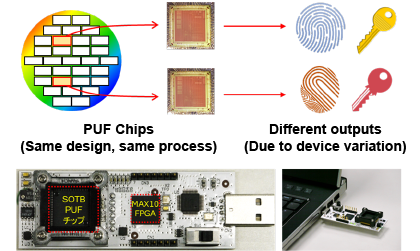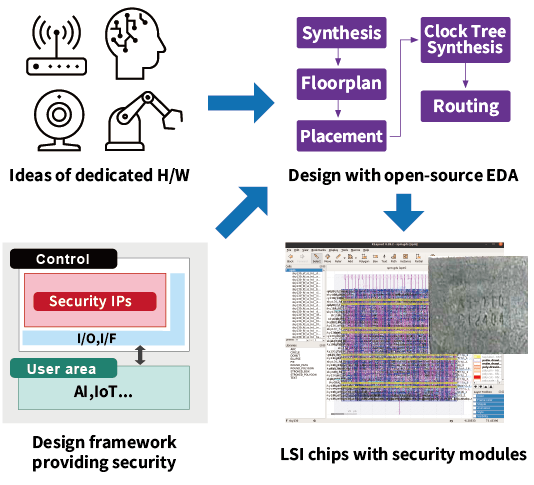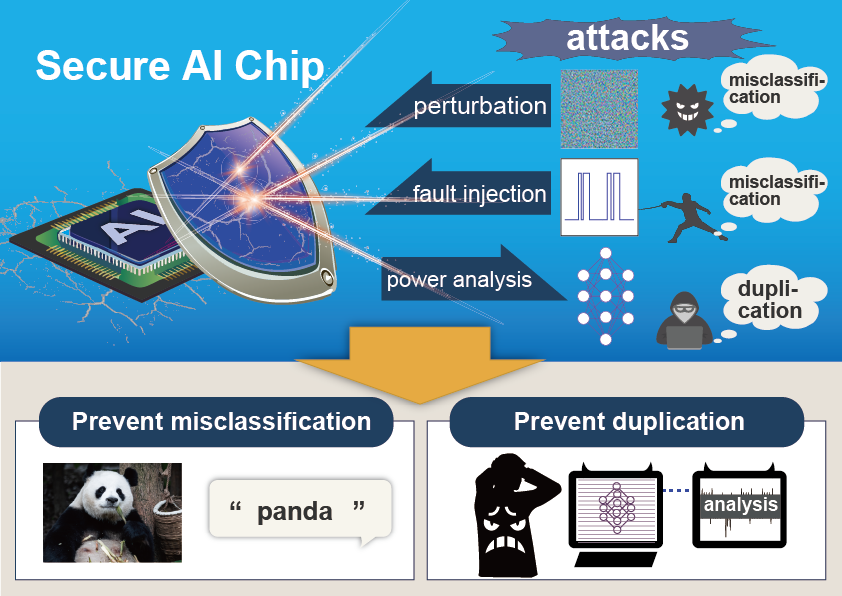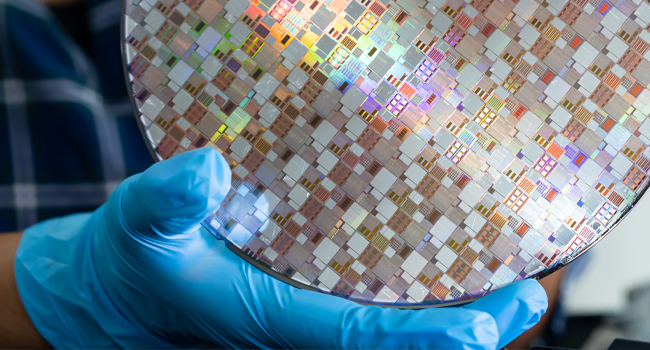Secure Integrated Circuits
Semiconductors are used everywhere, from consumer electronics to industrial products and critical infrastructure. They are essential for a comfortable and convenient society. However, the proliferation of counterfeit semiconductor products and information leaks from IoT devices has been of great concern in recent years. For secure and safe IoT/CPS (Cyber-Physical Systems), it is crucial that semiconductor products are genuine and that data security is guaranteed. To realize secure and safe IoT/CPS, we are conducting research and development on Physically Unclonable Functions (PUFs). PUFs utilize the inherent “variability” in semiconductors to authenticate individual IC chips and generate cryptographic keys for data protection. This technology effectively prevents device replication and counterfeiting, and it can be implemented at a low cost.
Digital circuit by printing device
Flexible printed devices enable the formation of circuits that are low-cost, can cover large areas, and are realized in thin, lightweight forms that can be freely bent. As AI technologies continue to be widely applied in real-world contexts, sensor devices-serving as key interfaces between AI and the physical world-are gaining increasing importance. This research aims to realize integrated sensor devices on flexible films using printing technologies. These devices will not only perform sensing functions but also incorporate advanced features such as data communication, security functions, and operation scheduling. Through this work, we aim to contribute to the proliferation and advancement of flexible and secure IoT devices that can be deployed in a wide range of environments and applications.
Open-source EDA and security
Recently, design methods of semiconductor circuits using open-source EDA tools are widely studied. The use of open-source EDA tools enables us to design and manufacture semiconductor chips at low cost and without difficulty. However, open-source EDA tools could possibly allow attackers to embed malicious circuits into the chips. To address this issue, we are studying secure design methods of semiconductor circuits using semiconductor circuits.
AI hardware security
With the rapid advancement of Artificial Intelligence (AI), the growing energy consumption associated with AI processing has become a significant concern. To enhance performance while reducing energy consumption, the adoption of dedicated AI chips is essential. These chips execute AI models that enable functions such as image and document generation or image recognition. Since AI models often constitute highly valuable proprietary assets, protecting them is critical. Recently, several attack methods have emerged that can either steal AI models from these chips or disturb their inference. To address these issues, we are engaged in the development of technologies to enhance the security of AI chips.














